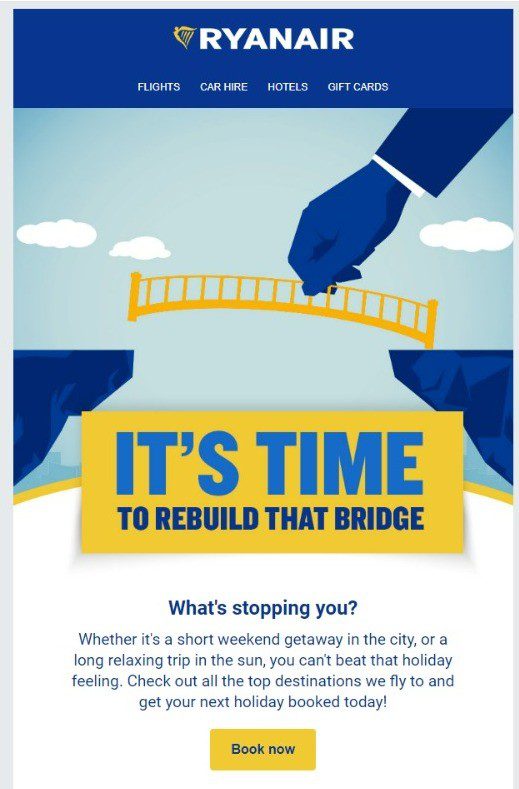6 Examples of a successful Win Back email
Even though the success of an email marketing campaign depends on a lot of important factors, everyone still focuses on the opening rates factor. Although it’s not a rational consideration, you can understand why it’s so popular: the number of clients who opened the email reflects the return on your investment, which was included in the production of the campaign, and will probably determine its future success. After all, no one wants to be ignored by the subscribers included in their mailing list, and before you start counting the money, you should check who was convinced by the campaign, and how often.
It’s not a simple task: subscribers can ignore you for different reasons; all of them will keep marketing managers awake at night. However, all is not lost. 45% of the subscribers in any mailing list will increase their involvement if they receive one of the most important emails in the automation: the Win Back email.
What is a win back email anyway?
It’s a misleading name, since it doesn’t always ends with winning, but it certainly helps wake up clients who went into a dormant state, and send them back on the right track to the checkout. Some might ask: “why not invest in new clients?”, after all, a client who haven’t made a purchase in a month probably knows what they’re doing, so why try and convince them? Well, the numbers will tell you why: the likelihood that a new client will make a purchase from a new website is 20%, compared to an existing client, whose likelihood of purchase jumps to 70%.
There are several ways to send a win back email to clients, and each has its advantages. With Passover approaching, and its shopping sprees, here are 7 suggestions for successful win back emails, to re-engage you clients.
1. “Remember me?” email
Is it possible that your clients don’t know you well enough? Or at least, not as well as you think they do? If that’s the case, then you should refresh their memory, and soon. A “remember me?” email is a great opportunity to let them know what’s new on your shelves, on the blog and with your price listing. You don’t need to give out a coupon or pull out the most aggressive sales promotions, simply raise the level of awareness of the brand and its values.
2. Product recommendation email
Let’s face it: most clients don’t start their day with reading your catalog, so you should alert them of products in an orderly email. Recommendation email is very important and it should be personalize, based on their search data or the latest search data. The email can be sent before sending another important email: social influencers’ recommendation email.

Even dormant clients don’t like missing on good deals
3. Incentives email
This email is the trump card of any brand, but not everyone is in a hurry to use it, in fear of discriminating existing clients. An email with discounts, coupons and perks meant for dormant clients can be problematic if it’s distributed to the wrong people, but if you use it wisely you could cash in.
4. Feedback email
Your clients are dormant and you just don’t know why? Maybe you should simply ask them. Sending out a survey is a bold move, but it can help you gather information and improve the decision-making process down the road. In fact, by now, clients are expecting to get it and take it seriously. It’s true that not all dormant clients will open it right away, but those that would, can indicate the real reason.
5. Last chance email
Even dormant clients don’t like missing on good deals. The premise of every marketing director should be that people see the emails in their inbox, but don’t bother with opening them. Therefore, last-chance deals may be attractive, and strengthen the only gut feeling stronger than a chance to win: the fear of losing.
6. Farewell email
People don’t like changes, even when they are really minor. This assumption is shared by many clients, who fear someone will move their cheese, even if they haven’t touched it in a while. A farewell email does exactly that: letting go of those who don’t show involvement. Furthermore, a proactive removal of recipients will improve deliverability, and strengthen your reputation with your email provider. All you need is to do it correctly, and allow clients to reconnect easily if they wish to.

